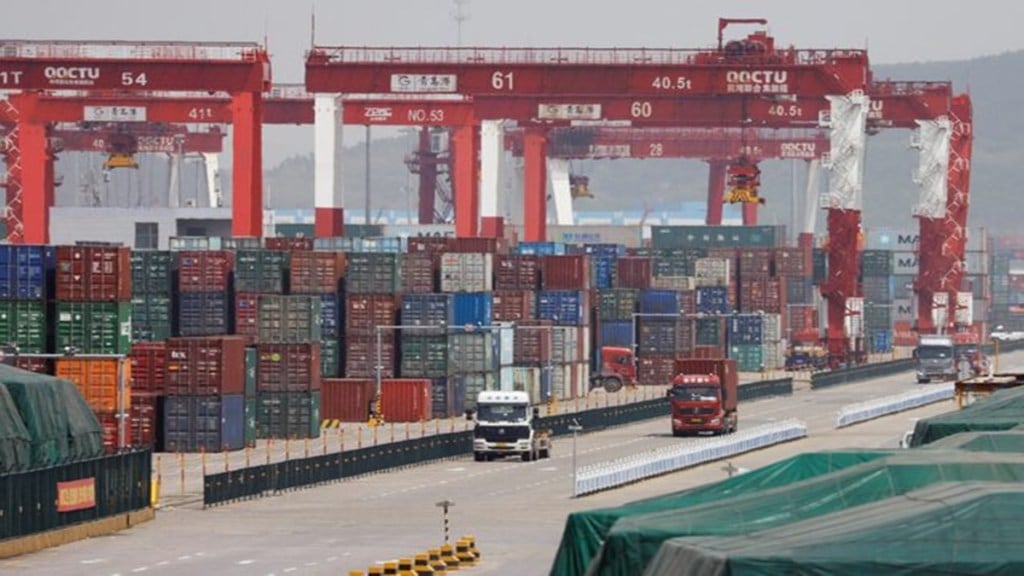As India comes under frequent attacks from the US and other trading partners over its “high import duties,” the Budget has scrapped seven rate slabs as part of an exercise of rationalisation of the tariff structure. However, this would not result in any reduction in overall tax incidence on the goods covered, because of the imposition of an agriculture infra cess. On some items, however, tax incidence will come down marginally.
By doing away with tariff rates of 100% and more, India would be in a position to deflect some criticism from US President Donald Trump who has dubbed India as a “tariff king” and is threatening to impose high tariffs on Indian exports. The Budget steps will bring down India’s average tariff from the current level of 17.3%. It will also come in handy for New Delhi during negotiations on free trade agreements with the UK, the European Union and others which have often pointed to 100-150% duties on products of interest to them such as automobiles, and wines and spirits.
After the removal of seven tariff rates over and above the seven tariff rates removed in 2023-24 Budget, there will be only eight remaining tariff rates including ‘zero’ rate, finance minister Nirmala Sitharaman said in her Budget speech. The slabs that will no longer exist are 25%, 30%, 35%, 40%, 100%, 125%, and 150%. The tariff rates of 25%, 30%, 35%, and 40% are being reduced to 20%, while products attracting duty of 100%, 125%, and 150% will now be taxed at 70%.
“The Budget exercise leaves only eight tariff rates, including the ‘zero’ rate. However, this count only considers basic customs duty (BCD) with ad valorem rates, ignoring the numerous specific and mixed rates that create hundreds of slabs,” founder of Global Trade Research Initiative Ajay Srivastava said.
The products that have seen effective reduction in duty rate are motorcycles where the duties will come down to 70% from 100% with no agri cess. Some chemicals and industrial inputs will also see lower tariffs . Separately the import duties on high capacity motorcycles have been reduced to 40% from 50%.
For simplification of customs tariff structure, the principle being adopted is not to apply more than one surcharge on imports of any industrial product. In line with this principle, goods attracting more than one cess or surcharge is being exempted from surcharge. For the ease of importers, some rates that were imposed through notifications are being prescribed through the customs schedule. Currently, 85% of tariff revenue comes from just 10% of tariff lines, while 60% of tariff lines contribute less than 3% of revenue. The reduction of slabs will lead to ease of doing business, officials said.
Apart from the slab rationalisation, changes have been made on the duration of assessment. The Customs Act currently lacks a fixed timeline for finalising provisional assessments, causing delays and uncertainties. The new provision mandates finalisation within two years, extendable by one additional year, ensuring greater predictability for businesses.
The Economic Survey, presented on January 31, stated the shift from globalisation to rising trade protectionism accompanied by increased uncertainty calls for a new strategic trade roadmap for India. To remain competitive and enhance its participation in global supply chains, India must continue reducing trade costs and improving facilitation to boost export competitiveness while the industry must continue to invest in quality. While the world tariffs and other barriers go up,the Survey has suggested their use by India to aid its industrialisation and attract foreign investment. Tariffs can aid the goals of industrial policy and help in the development of desirable sectors in the economy, the survey said citing examples of the industrialised countries in Asia and the West. Non Tariff Measures (NTM) can indirectly affect FDI through their impact on imports by encouraging FDI to the country that imposes them, as these measures raise barriers to market access,” the Survey added.

